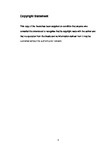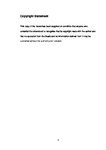Molecular Mechanisms of Protection from Hepatitis C Infection
| dc.contributor.supervisor | Cramp, Matthew | |
| dc.contributor.author | Mandalou, Paraskevi | |
| dc.contributor.other | Faculty of Health | en_US |
| dc.date.accessioned | 2018-05-31T13:39:46Z | |
| dc.date.issued | 2018 | |
| dc.identifier | 10466181 | en_US |
| dc.identifier.uri | http://hdl.handle.net/10026.1/11610 | |
| dc.description | Full version: Access restricted permanently due to 3rd party copyright restrictions. Restriction set on 31.05.2018 by SE, Doctoral College | |
| dc.description.abstract |
Hepatitis C virus (HCV) infection is a major global health burden affecting 1-2% of the world’s population. The majority of infected individuals will develop chronic infection and are at risk of cirrhosis and hepatocellular carcinoma. There is currently no preventative vaccine available for HCV. In the developed world, the highest HCV incidence and prevalence rate is amongst intravenous drug users (IDU). The duration, frequency of IDU, and sharing of drug injecting equipment contribute to particularly high rates of HCV infection in this population. Individuals at high risk of recurrent exposure to HCV infection from long term IDU have been recruited in Plymouth, UK, from 2003 onwards and if they remain negative for HCV infection are termed exposed uninfected (EU). Understanding the factors that prevent HCV infection in this cohort could give valuable insight into the mechanisms of natural resistance to HCV infection. The EU cohort was previously shown to have characteristics attributable to the activation of both the adaptive and the innate arms of the immune system with no known dominant, immune or non- immune, mechanism of HCV protection. The aim of this thesis was to attempt and identify this mechanism and for that purpose a comparative transcriptional profile study was initially performed between 3 groups: EU, individuals who spontaneously cleared HCV infection (SR) and patients with chronic HCV infection (CHCV). Of the differentially regulated genes, the association with resistance to HCV was strongest for Interleukin-27 (IL-27) which was significantly upregulated in EU compared to the 2 other groups and C X C motif chemokine 7 (CXCL7) which was significantly upregulated in EU relative to the CHCV group. The CD28 mediated T-helper cell signalling pathway was significantly upregulated in SR relative to the 2 other groups. We attempted to corroborate the above findings and we demonstrated that IL-27 is overexpressed in EU, compared to SR and CHCV. The possible role of IL-27 in natural protection from HCV infection remains to be elucidated and requires further study. | en_US |
| dc.language.iso | en | |
| dc.publisher | University of Plymouth | |
| dc.rights | CC0 1.0 Universal | * |
| dc.rights.uri | http://creativecommons.org/publicdomain/zero/1.0/ | * |
| dc.subject | Hepatitis C | en_US |
| dc.subject | Vaccine for hepatitis C | en_US |
| dc.subject | Immunology of hepatitis C | en_US |
| dc.subject.classification | Other (e.g., MD, EdD, DBA, DClinPsy) | en_US |
| dc.title | Molecular Mechanisms of Protection from Hepatitis C Infection | en_US |
| dc.type | Thesis | |
| plymouth.version | non-publishable | en_US |
| dc.identifier.doi | http://dx.doi.org/10.24382/365 | |
| dc.identifier.doi | http://dx.doi.org/10.24382/365 | |
| dc.type.qualification | Doctorate | en_US |
| rioxxterms.version | NA |
Files in this item
This item appears in the following Collection(s)
-
01 Research Theses Main Collection
Research Theses Main




